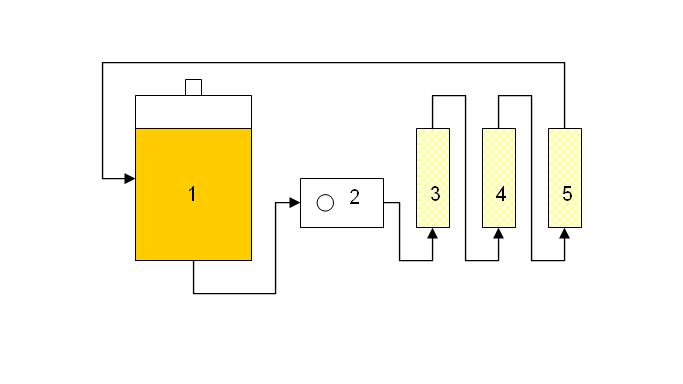Consider the attached diagram
1) Fermenter with two hose barb attachment and airlock
2) peristaltic pump sized to provide calculated flow and pressure to 3-5
3) column with alpha amylase beads
4) column with beta galactosidase
5) column with yeast beads
-- column dimensions based on contact time, reaction rate, ability of beads to withstand flow stresses
Optional inline columns: filtering, nutrient, dry hop column, or maybe even a UV disinfection column.
Thought experiment -- if a combination of flow and column dimensions allow for a single pass, is it possible to produce a continuous flow of beer at the end of the process. This may require maintaining a volume in the 1st tank between a certain minimum/maximum level through periodic additions of fresh wort. Potential advantages to continuously brewed beer are the reduction or process down-time and cost of sanitation, a consistency of beer over a long period of time...
Just spit balling here...










































![Craft A Brew - Safale BE-256 Yeast - Fermentis - Belgian Ale Dry Yeast - For Belgian & Strong Ales - Ingredients for Home Brewing - Beer Making Supplies - [3 Pack]](https://m.media-amazon.com/images/I/51bcKEwQmWL._SL500_.jpg)
















